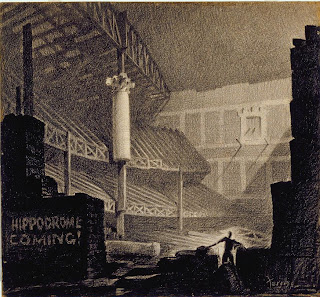“The rendering is a means toward an end; the end is architecture.”
Hugh Ferriss, 1940
I feel obligated to point out that I am heavily influence by the work of Hugh Ferriss. For one, Ferriss has a insane body of work. However, I must note that above his drawing abilities, he was the author of two books and a remarkable speaker. There are two things that strike me the most of his drawings. First, is the ability to see an evolution in his drawing style. For example, his earlier works we see a more formal approach to his renderings. Later, his drawings carry a more romantic nature and imperious style. Secondly, are the drawings that are done of “mid-construction”. A very interesting approach, as most people perceive architectural rendering a finished product. A later delineator, Ernest Burden mentioned;
“There are two kinds of renderers: Those interested in giving a faithful representation of what a building will look like, and those interested in presenting a total artistic vision. His drawings belong in the latter, because they are expressions of architectural concepts, rather than portrayals of how a building will look. In his work, drawing and design are inseparable.” 1 When we look at his drawings they evoke a sense of Imagination. With architectural illustrations of today, we can easily miss that part with the famous “one-click” render button. “
Rendering is an exercise in imagination,… the imagination must be fully controlled by a realization of the structural facts involved. It is a matter of equating artist reach to architectural grasp.”2
Ferriss' archive, including drawings and papers, is held by the Drawings & Archives Department of the
Avery Architectural and Fine Arts Library at
Columbia University.
1 Leich, Jean. Architectural Visions: the drawings of Hugh Ferriss. New York: Whitney Library of Design, 1980.
2 Ferriss, Hugh. "Architectural Rendering", Encylcopaedia Britannica. 1961



























